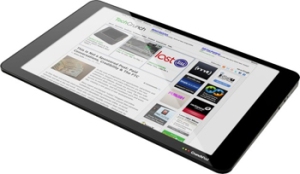
Last week I stood in front of a convention of high school journalists and told them a career in journalism was still a solid prospect. I bit neither my lip nor tongue as I said this. For most in the room, it will be 5-7 years until they complete college. In that amount of time, newspapers are going to experience a lot of change.
In this month’s Digital Journalist, an essay called “Circling the Drain,” by Mark Loundy summed up the present state of newspapers perfectly:
“Newspapers are trapped between two worlds. They can’t offer a viable online service because they can’t spend enough on staffing. Meanwhile, they’ve lashed themselves to a sinking ship that they’re bailing out by tossing journalists overboard. Of course, this drives readers away, causing the ship to sink faster.”
As many printed newspapers sink into irrelevance in their communities, the big question left hanging is what will replace them? Will newspaper publishers wake-up and invest in their online news sites, while also finding the courage to cut away their failing print products? Can they find a way to make the boatloads of profits online they once had in print?
In some ways, I don’t think it matters whether newspaper online websites survive either. When I looked out at that room full of high school journalism students, I realized they are going to be the ones that will define the revival of journalism in the digital age. This is a group that rarely reads the printed newspaper. When I ask them why? I get answers ranging from: “It’s not searchable,” and “The newspaper limits my ability to connect with multiple points of view,” to “I’m online all the time, so I sometimes will read it there.”
As I anguish over the present state of print newspapers, I’m likewise excited to see the future of online journalism begin to take form. Hyper-local sites are starting to claim ground where traditional journalism fails to defend.
Angela Grant, a former San Antonio Express multimedia producer who now works for a hyper-local news website instantnewsWestU.com writes in her popular News Videographer blog:
“Here’s the most awesome things about my new job: I’m now a TRUE multimedia journalist. On any given day, I will write a story, take pictures, produce videos, or create maps to illustrate stories. I’m learning a lot of new skills dealing with beat reporting and developing sources.”
It will be young people like Grant who will be the ones to shape digital journalism’s future. Many of these online experiments will fail, but in time, some formula will stick.
And don’t discount the castoffs from newspapers. They will also have an effect. There are a lot of talented former print reporters and visual journalists that are looking for online palettes to display their talents. Smart people don’t wallow in the past for long.
I know newspaper publishers understand that as their print product flounder, they need to be in a solid position to compete with their websites. The movement to online-only news websites will open up the conduit for new jobs in journalism. So for high school students interested in a career in journalism, I say: Come forth, be passionate, be curious and most important, be innovative.

